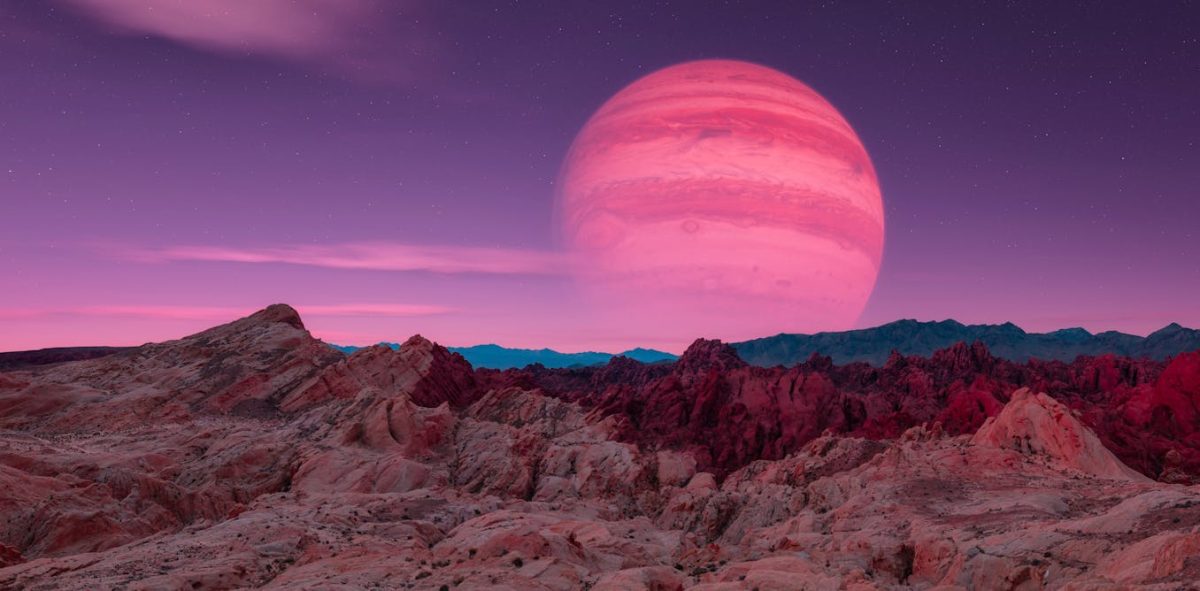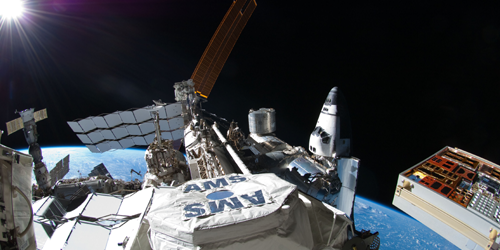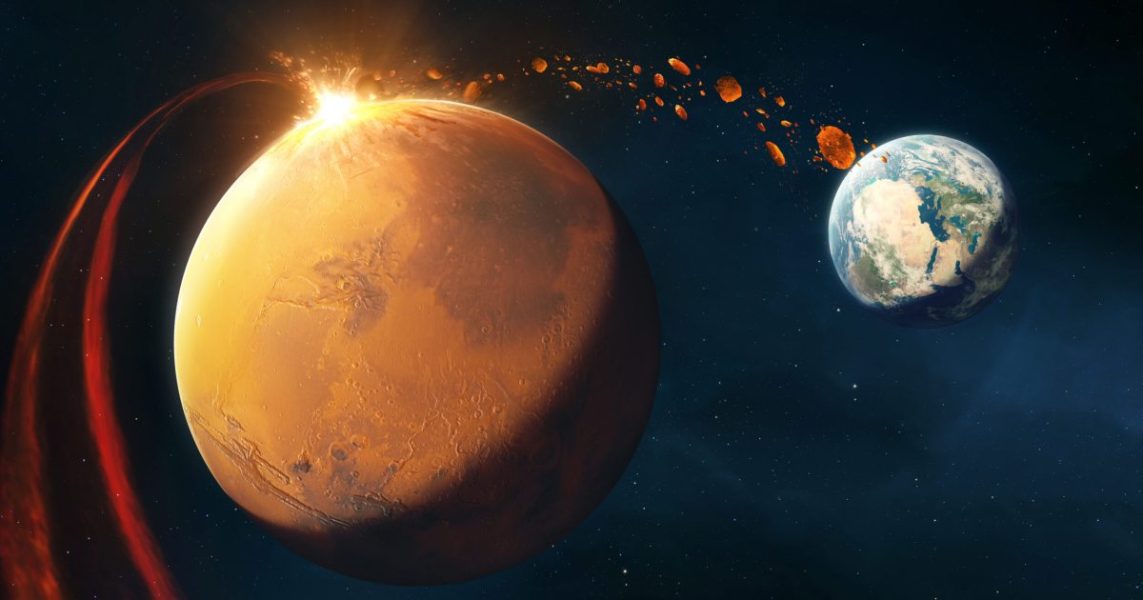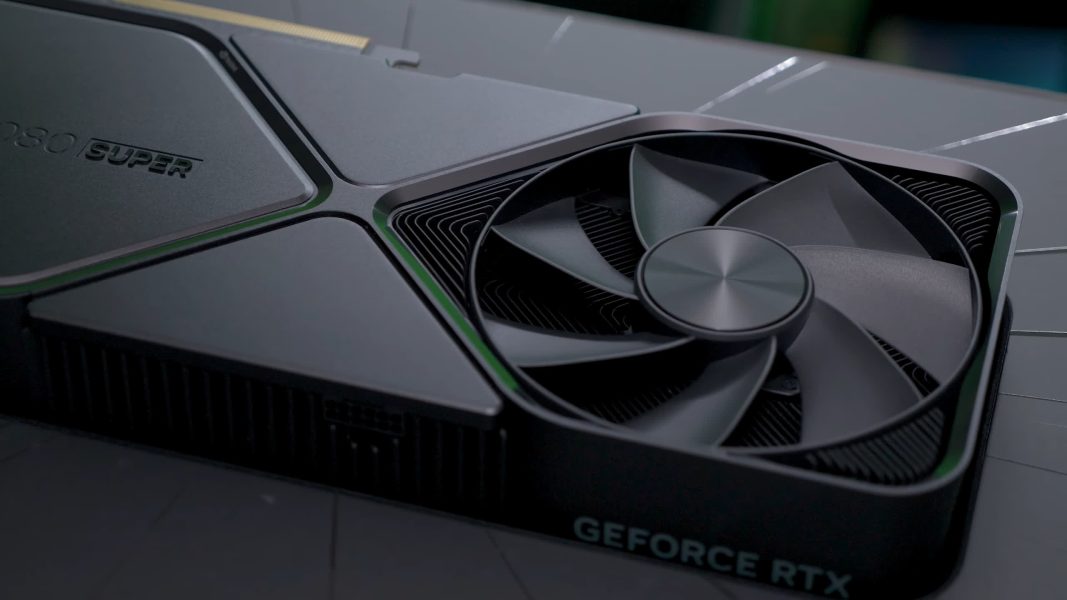Researchers Thought They Discovered an Asteroid—It Was Elon Musk’s Tesla Floating in Space – Stewartville Star
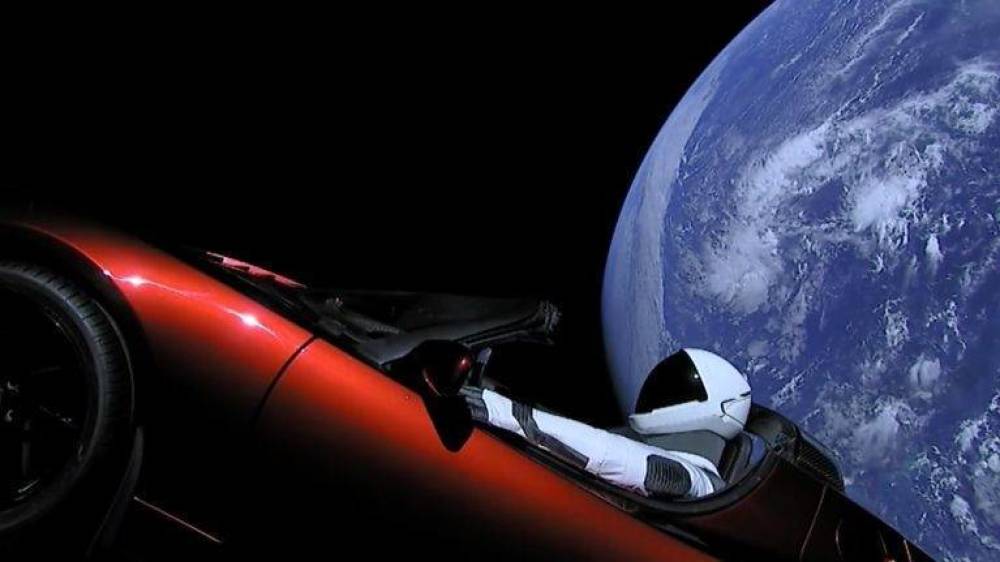
In a startling turn of events, the scientific community was left reeling after a group of researchers mistook Elon Musk’s Tesla Roadster for a potentially hazardous asteroid. This astronomical blunder not only highlights the challenges of space observation but also raises concerns about the increasing number of untracked objects in Earth’s orbit.
The cosmic case of mistaken identity
On January 2, 2025, astronomers at the Harvard-Smithsonian Center for Astrophysics in Cambridge, Massachusetts, believed they had made a groundbreaking discovery. Following a tip from a Turkish amateur astronomer, the team identified what they thought was a new asteroid, dubbing it “2018 CN41”. The object’s peculiar orbit, which brought it within 240,000 kilometers of Earth—closer than the Moon’s orbit—initially classified it as a near-Earth object (NEO) worthy of careful monitoring.
However, the excitement was short-lived. Within 17 hours of the initial sighting, the truth emerged: the mysterious object was not an asteroid at all, but rather Elon Musk’s Tesla Roadster, launched into space by SpaceX in February 2018. This revelation sent shockwaves through the scientific community, prompting discussions about the reliability of current space observation methods and the potential consequences of such misidentifications.
News
Doctor reveals five hidden effects of stopping alcohol for 30 days has on the brain
The incident serves as a reminder of the rapid technological advancements and their unexpected impacts on various fields, including astronomy. Just as Mark Zuckerberg’s announcement about the end of smartphones shocked the tech world, this space observation blunder has rattled the scientific community.
Space debris: A growing concern for astronomers
The misidentification of Musk’s car as an asteroid has brought attention to a larger issue: the increasing amount of space debris orbiting Earth. As more nations and private companies venture into space exploration, the number of untracked objects in orbit continues to grow, posing potential risks to both Earth and future space missions.
Experts warn that this problem could have serious implications:
Interference with asteroid detection efforts
Increased risk of collisions in space
Challenges in distinguishing between natural and artificial objects
Potential waste of resources on misidentified targets
Jonathan McDowell, an astrophysicist at the Harvard-Smithsonian Center, highlighted the potential consequences of such errors: “In the worst-case scenario, you could spend a billion dollars launching a space probe to study an asteroid, only to realize it’s not one when you get there.” This statement underscores the need for more accurate identification methods and better tracking of man-made objects in space.
News
Perry, the donkey that inspired the character in the animated film Shrek, has died at age 30
The Roadster’s cosmic journey
Elon Musk’s decision to launch his personal Tesla Roadster into space during the inaugural flight of SpaceX’s Falcon Heavy rocket in 2018 was a bold publicity stunt that captured global attention. The electric sports car, complete with a spacesuit-clad mannequin nicknamed “Starman” at the wheel, became the first production car to be sent into space.
NASA has been tracking the vehicle’s journey since its launch and provides detailed information about its orbit on their website. According to their calculations, the Roadster’s orbit around the sun is expected to remain stable for millions of years. This long-term presence in space raises questions about the potential impact of human-made objects on future space exploration and astronomical observations.
The table below illustrates the key differences between the Tesla Roadster and a typical near-Earth asteroid:
CharacteristicTesla RoadsterTypical NEOOriginMan-madeNaturalCompositionMetal, plastic, fabricRock, metalSizeApproximately 4 meters longVaries (1 meter to kilometers)Potential threat to EarthMinimalVaries (potentially significant)
Lessons learned and future implications
This astronomical mix-up serves as a wake-up call for the scientific community, highlighting the need for improved space observation techniques and more robust systems for tracking artificial objects in orbit. As we continue to launch more satellites and spacecraft, distinguishing between natural and man-made objects will become increasingly crucial.
To address these challenges, experts suggest several potential solutions:
News
After announcing the end date for smartphones, Mark Zuckerberg is speeding up their replacements!
Developing more sophisticated imaging and tracking technologies
Improving international cooperation in space debris monitoring
Implementing stricter regulations for space launches and debris mitigation
Investing in research to better understand the long-term effects of space debris
As the space industry continues to evolve, it’s clear that innovative strategies and high-level productivity will be crucial in addressing these emerging challenges. The ability to adapt quickly and maintain focus on long-term goals will be essential for both scientists and industry leaders in the field.
Furthermore, this incident underscores the importance of clear communication and effective networking within the scientific community. By fostering stronger connections and improving information sharing, researchers can work together more efficiently to avoid similar mistakes in the future.
As we move forward, it’s crucial for both the scientific community and the public to remain vigilant and adaptable. Just as CEOs use specific interview questions to identify top candidates, astronomers and space agencies must develop new methods to accurately identify and classify objects in our increasingly crowded orbit. By learning from this cosmic case of mistaken identity, we can work towards a safer and more accurately monitored space environment for generations to come.
On January 2, 2025, astronomers at the Harvard-Smithsonian Center for Astrophysics in Cambridge, Massachusetts, believed they had made a groundbreaking discovery. Following a tip from a Turkish amateur astronomer, the team identified what they thought was a new asteroid, dubbing it “2018 CN41”. The object’s peculiar orbit, which brought it within 240,000 kilometers of Earth—closer than the Moon’s orbit—initially classified it as a near-Earth object (NEO) worthy of careful monitoring.
However, the excitement was short-lived. Within 17 hours of the initial sighting, the truth emerged: the mysterious object was not an asteroid at all, but rather Elon Musk’s Tesla Roadster, launched into space by SpaceX in February 2018. This revelation sent shockwaves through the scientific community, prompting discussions about the reliability of current space observation methods and the potential consequences of such misidentifications.
News
Doctor reveals five hidden effects of stopping alcohol for 30 days has on the brain
The incident serves as a reminder of the rapid technological advancements and their unexpected impacts on various fields, including astronomy. Just as Mark Zuckerberg’s announcement about the end of smartphones shocked the tech world, this space observation blunder has rattled the scientific community.
Space debris: A growing concern for astronomers
The misidentification of Musk’s car as an asteroid has brought attention to a larger issue: the increasing amount of space debris orbiting Earth. As more nations and private companies venture into space exploration, the number of untracked objects in orbit continues to grow, posing potential risks to both Earth and future space missions.
Experts warn that this problem could have serious implications:
Interference with asteroid detection efforts
Increased risk of collisions in space
Challenges in distinguishing between natural and artificial objects
Potential waste of resources on misidentified targets
Jonathan McDowell, an astrophysicist at the Harvard-Smithsonian Center, highlighted the potential consequences of such errors: “In the worst-case scenario, you could spend a billion dollars launching a space probe to study an asteroid, only to realize it’s not one when you get there.” This statement underscores the need for more accurate identification methods and better tracking of man-made objects in space.
News
Perry, the donkey that inspired the character in the animated film Shrek, has died at age 30
The Roadster’s cosmic journey
Elon Musk’s decision to launch his personal Tesla Roadster into space during the inaugural flight of SpaceX’s Falcon Heavy rocket in 2018 was a bold publicity stunt that captured global attention. The electric sports car, complete with a spacesuit-clad mannequin nicknamed “Starman” at the wheel, became the first production car to be sent into space.
NASA has been tracking the vehicle’s journey since its launch and provides detailed information about its orbit on their website. According to their calculations, the Roadster’s orbit around the sun is expected to remain stable for millions of years. This long-term presence in space raises questions about the potential impact of human-made objects on future space exploration and astronomical observations.
The table below illustrates the key differences between the Tesla Roadster and a typical near-Earth asteroid:
CharacteristicTesla RoadsterTypical NEOOriginMan-madeNaturalCompositionMetal, plastic, fabricRock, metalSizeApproximately 4 meters longVaries (1 meter to kilometers)Potential threat to EarthMinimalVaries (potentially significant)
Lessons learned and future implications
This astronomical mix-up serves as a wake-up call for the scientific community, highlighting the need for improved space observation techniques and more robust systems for tracking artificial objects in orbit. As we continue to launch more satellites and spacecraft, distinguishing between natural and man-made objects will become increasingly crucial.
To address these challenges, experts suggest several potential solutions:
News
After announcing the end date for smartphones, Mark Zuckerberg is speeding up their replacements!
Developing more sophisticated imaging and tracking technologies
Improving international cooperation in space debris monitoring
Implementing stricter regulations for space launches and debris mitigation
Investing in research to better understand the long-term effects of space debris
As the space industry continues to evolve, it’s clear that innovative strategies and high-level productivity will be crucial in addressing these emerging challenges. The ability to adapt quickly and maintain focus on long-term goals will be essential for both scientists and industry leaders in the field.
Furthermore, this incident underscores the importance of clear communication and effective networking within the scientific community. By fostering stronger connections and improving information sharing, researchers can work together more efficiently to avoid similar mistakes in the future.
As we move forward, it’s crucial for both the scientific community and the public to remain vigilant and adaptable. Just as CEOs use specific interview questions to identify top candidates, astronomers and space agencies must develop new methods to accurately identify and classify objects in our increasingly crowded orbit. By learning from this cosmic case of mistaken identity, we can work towards a safer and more accurately monitored space environment for generations to come.
However, the excitement was short-lived. Within 17 hours of the initial sighting, the truth emerged: the mysterious object was not an asteroid at all, but rather Elon Musk’s Tesla Roadster, launched into space by SpaceX in February 2018. This revelation sent shockwaves through the scientific community, prompting discussions about the reliability of current space observation methods and the potential consequences of such misidentifications.
News
Doctor reveals five hidden effects of stopping alcohol for 30 days has on the brain
The incident serves as a reminder of the rapid technological advancements and their unexpected impacts on various fields, including astronomy. Just as Mark Zuckerberg’s announcement about the end of smartphones shocked the tech world, this space observation blunder has rattled the scientific community.
Space debris: A growing concern for astronomers
The misidentification of Musk’s car as an asteroid has brought attention to a larger issue: the increasing amount of space debris orbiting Earth. As more nations and private companies venture into space exploration, the number of untracked objects in orbit continues to grow, posing potential risks to both Earth and future space missions.
Experts warn that this problem could have serious implications:
Interference with asteroid detection efforts
Increased risk of collisions in space
Challenges in distinguishing between natural and artificial objects
Potential waste of resources on misidentified targets
Jonathan McDowell, an astrophysicist at the Harvard-Smithsonian Center, highlighted the potential consequences of such errors: “In the worst-case scenario, you could spend a billion dollars launching a space probe to study an asteroid, only to realize it’s not one when you get there.” This statement underscores the need for more accurate identification methods and better tracking of man-made objects in space.
News
Perry, the donkey that inspired the character in the animated film Shrek, has died at age 30
The Roadster’s cosmic journey
Elon Musk’s decision to launch his personal Tesla Roadster into space during the inaugural flight of SpaceX’s Falcon Heavy rocket in 2018 was a bold publicity stunt that captured global attention. The electric sports car, complete with a spacesuit-clad mannequin nicknamed “Starman” at the wheel, became the first production car to be sent into space.
NASA has been tracking the vehicle’s journey since its launch and provides detailed information about its orbit on their website. According to their calculations, the Roadster’s orbit around the sun is expected to remain stable for millions of years. This long-term presence in space raises questions about the potential impact of human-made objects on future space exploration and astronomical observations.
The table below illustrates the key differences between the Tesla Roadster and a typical near-Earth asteroid:
CharacteristicTesla RoadsterTypical NEOOriginMan-madeNaturalCompositionMetal, plastic, fabricRock, metalSizeApproximately 4 meters longVaries (1 meter to kilometers)Potential threat to EarthMinimalVaries (potentially significant)
Lessons learned and future implications
This astronomical mix-up serves as a wake-up call for the scientific community, highlighting the need for improved space observation techniques and more robust systems for tracking artificial objects in orbit. As we continue to launch more satellites and spacecraft, distinguishing between natural and man-made objects will become increasingly crucial.
To address these challenges, experts suggest several potential solutions:
News
After announcing the end date for smartphones, Mark Zuckerberg is speeding up their replacements!
Developing more sophisticated imaging and tracking technologies
Improving international cooperation in space debris monitoring
Implementing stricter regulations for space launches and debris mitigation
Investing in research to better understand the long-term effects of space debris
As the space industry continues to evolve, it’s clear that innovative strategies and high-level productivity will be crucial in addressing these emerging challenges. The ability to adapt quickly and maintain focus on long-term goals will be essential for both scientists and industry leaders in the field.
Furthermore, this incident underscores the importance of clear communication and effective networking within the scientific community. By fostering stronger connections and improving information sharing, researchers can work together more efficiently to avoid similar mistakes in the future.
As we move forward, it’s crucial for both the scientific community and the public to remain vigilant and adaptable. Just as CEOs use specific interview questions to identify top candidates, astronomers and space agencies must develop new methods to accurately identify and classify objects in our increasingly crowded orbit. By learning from this cosmic case of mistaken identity, we can work towards a safer and more accurately monitored space environment for generations to come.
The misidentification of Musk’s car as an asteroid has brought attention to a larger issue: the increasing amount of space debris orbiting Earth. As more nations and private companies venture into space exploration, the number of untracked objects in orbit continues to grow, posing potential risks to both Earth and future space missions.
Experts warn that this problem could have serious implications:
Interference with asteroid detection efforts
Increased risk of collisions in space
Challenges in distinguishing between natural and artificial objects
Potential waste of resources on misidentified targets
Jonathan McDowell, an astrophysicist at the Harvard-Smithsonian Center, highlighted the potential consequences of such errors: “In the worst-case scenario, you could spend a billion dollars launching a space probe to study an asteroid, only to realize it’s not one when you get there.” This statement underscores the need for more accurate identification methods and better tracking of man-made objects in space.
News
Perry, the donkey that inspired the character in the animated film Shrek, has died at age 30
The Roadster’s cosmic journey
Elon Musk’s decision to launch his personal Tesla Roadster into space during the inaugural flight of SpaceX’s Falcon Heavy rocket in 2018 was a bold publicity stunt that captured global attention. The electric sports car, complete with a spacesuit-clad mannequin nicknamed “Starman” at the wheel, became the first production car to be sent into space.
NASA has been tracking the vehicle’s journey since its launch and provides detailed information about its orbit on their website. According to their calculations, the Roadster’s orbit around the sun is expected to remain stable for millions of years. This long-term presence in space raises questions about the potential impact of human-made objects on future space exploration and astronomical observations.
The table below illustrates the key differences between the Tesla Roadster and a typical near-Earth asteroid:
CharacteristicTesla RoadsterTypical NEOOriginMan-madeNaturalCompositionMetal, plastic, fabricRock, metalSizeApproximately 4 meters longVaries (1 meter to kilometers)Potential threat to EarthMinimalVaries (potentially significant)
Lessons learned and future implications
This astronomical mix-up serves as a wake-up call for the scientific community, highlighting the need for improved space observation techniques and more robust systems for tracking artificial objects in orbit. As we continue to launch more satellites and spacecraft, distinguishing between natural and man-made objects will become increasingly crucial.
To address these challenges, experts suggest several potential solutions:
News
After announcing the end date for smartphones, Mark Zuckerberg is speeding up their replacements!
Developing more sophisticated imaging and tracking technologies
Improving international cooperation in space debris monitoring
Implementing stricter regulations for space launches and debris mitigation
Investing in research to better understand the long-term effects of space debris
As the space industry continues to evolve, it’s clear that innovative strategies and high-level productivity will be crucial in addressing these emerging challenges. The ability to adapt quickly and maintain focus on long-term goals will be essential for both scientists and industry leaders in the field.
Furthermore, this incident underscores the importance of clear communication and effective networking within the scientific community. By fostering stronger connections and improving information sharing, researchers can work together more efficiently to avoid similar mistakes in the future.
As we move forward, it’s crucial for both the scientific community and the public to remain vigilant and adaptable. Just as CEOs use specific interview questions to identify top candidates, astronomers and space agencies must develop new methods to accurately identify and classify objects in our increasingly crowded orbit. By learning from this cosmic case of mistaken identity, we can work towards a safer and more accurately monitored space environment for generations to come.
Experts warn that this problem could have serious implications:
Interference with asteroid detection efforts
Increased risk of collisions in space
Challenges in distinguishing between natural and artificial objects
Potential waste of resources on misidentified targets
Jonathan McDowell, an astrophysicist at the Harvard-Smithsonian Center, highlighted the potential consequences of such errors: “In the worst-case scenario, you could spend a billion dollars launching a space probe to study an asteroid, only to realize it’s not one when you get there.” This statement underscores the need for more accurate identification methods and better tracking of man-made objects in space.
News
Perry, the donkey that inspired the character in the animated film Shrek, has died at age 30
The Roadster’s cosmic journey
Elon Musk’s decision to launch his personal Tesla Roadster into space during the inaugural flight of SpaceX’s Falcon Heavy rocket in 2018 was a bold publicity stunt that captured global attention. The electric sports car, complete with a spacesuit-clad mannequin nicknamed “Starman” at the wheel, became the first production car to be sent into space.
NASA has been tracking the vehicle’s journey since its launch and provides detailed information about its orbit on their website. According to their calculations, the Roadster’s orbit around the sun is expected to remain stable for millions of years. This long-term presence in space raises questions about the potential impact of human-made objects on future space exploration and astronomical observations.
The table below illustrates the key differences between the Tesla Roadster and a typical near-Earth asteroid:
CharacteristicTesla RoadsterTypical NEOOriginMan-madeNaturalCompositionMetal, plastic, fabricRock, metalSizeApproximately 4 meters longVaries (1 meter to kilometers)Potential threat to EarthMinimalVaries (potentially significant)
Lessons learned and future implications
This astronomical mix-up serves as a wake-up call for the scientific community, highlighting the need for improved space observation techniques and more robust systems for tracking artificial objects in orbit. As we continue to launch more satellites and spacecraft, distinguishing between natural and man-made objects will become increasingly crucial.
To address these challenges, experts suggest several potential solutions:
News
After announcing the end date for smartphones, Mark Zuckerberg is speeding up their replacements!
Developing more sophisticated imaging and tracking technologies
Improving international cooperation in space debris monitoring
Implementing stricter regulations for space launches and debris mitigation
Investing in research to better understand the long-term effects of space debris
As the space industry continues to evolve, it’s clear that innovative strategies and high-level productivity will be crucial in addressing these emerging challenges. The ability to adapt quickly and maintain focus on long-term goals will be essential for both scientists and industry leaders in the field.
Furthermore, this incident underscores the importance of clear communication and effective networking within the scientific community. By fostering stronger connections and improving information sharing, researchers can work together more efficiently to avoid similar mistakes in the future.
As we move forward, it’s crucial for both the scientific community and the public to remain vigilant and adaptable. Just as CEOs use specific interview questions to identify top candidates, astronomers and space agencies must develop new methods to accurately identify and classify objects in our increasingly crowded orbit. By learning from this cosmic case of mistaken identity, we can work towards a safer and more accurately monitored space environment for generations to come.
Jonathan McDowell, an astrophysicist at the Harvard-Smithsonian Center, highlighted the potential consequences of such errors: “In the worst-case scenario, you could spend a billion dollars launching a space probe to study an asteroid, only to realize it’s not one when you get there.” This statement underscores the need for more accurate identification methods and better tracking of man-made objects in space.
News
Perry, the donkey that inspired the character in the animated film Shrek, has died at age 30
Elon Musk’s decision to launch his personal Tesla Roadster into space during the inaugural flight of SpaceX’s Falcon Heavy rocket in 2018 was a bold publicity stunt that captured global attention. The electric sports car, complete with a spacesuit-clad mannequin nicknamed “Starman” at the wheel, became the first production car to be sent into space.
NASA has been tracking the vehicle’s journey since its launch and provides detailed information about its orbit on their website. According to their calculations, the Roadster’s orbit around the sun is expected to remain stable for millions of years. This long-term presence in space raises questions about the potential impact of human-made objects on future space exploration and astronomical observations.
The table below illustrates the key differences between the Tesla Roadster and a typical near-Earth asteroid:
CharacteristicTesla RoadsterTypical NEOOriginMan-madeNaturalCompositionMetal, plastic, fabricRock, metalSizeApproximately 4 meters longVaries (1 meter to kilometers)Potential threat to EarthMinimalVaries (potentially significant)
Lessons learned and future implications
This astronomical mix-up serves as a wake-up call for the scientific community, highlighting the need for improved space observation techniques and more robust systems for tracking artificial objects in orbit. As we continue to launch more satellites and spacecraft, distinguishing between natural and man-made objects will become increasingly crucial.
To address these challenges, experts suggest several potential solutions:
News
After announcing the end date for smartphones, Mark Zuckerberg is speeding up their replacements!
Developing more sophisticated imaging and tracking technologies
Improving international cooperation in space debris monitoring
Implementing stricter regulations for space launches and debris mitigation
Investing in research to better understand the long-term effects of space debris
As the space industry continues to evolve, it’s clear that innovative strategies and high-level productivity will be crucial in addressing these emerging challenges. The ability to adapt quickly and maintain focus on long-term goals will be essential for both scientists and industry leaders in the field.
Furthermore, this incident underscores the importance of clear communication and effective networking within the scientific community. By fostering stronger connections and improving information sharing, researchers can work together more efficiently to avoid similar mistakes in the future.
As we move forward, it’s crucial for both the scientific community and the public to remain vigilant and adaptable. Just as CEOs use specific interview questions to identify top candidates, astronomers and space agencies must develop new methods to accurately identify and classify objects in our increasingly crowded orbit. By learning from this cosmic case of mistaken identity, we can work towards a safer and more accurately monitored space environment for generations to come.
NASA has been tracking the vehicle’s journey since its launch and provides detailed information about its orbit on their website. According to their calculations, the Roadster’s orbit around the sun is expected to remain stable for millions of years. This long-term presence in space raises questions about the potential impact of human-made objects on future space exploration and astronomical observations.
The table below illustrates the key differences between the Tesla Roadster and a typical near-Earth asteroid:
CharacteristicTesla RoadsterTypical NEOOriginMan-madeNaturalCompositionMetal, plastic, fabricRock, metalSizeApproximately 4 meters longVaries (1 meter to kilometers)Potential threat to EarthMinimalVaries (potentially significant)
Lessons learned and future implications
This astronomical mix-up serves as a wake-up call for the scientific community, highlighting the need for improved space observation techniques and more robust systems for tracking artificial objects in orbit. As we continue to launch more satellites and spacecraft, distinguishing between natural and man-made objects will become increasingly crucial.
To address these challenges, experts suggest several potential solutions:
News
After announcing the end date for smartphones, Mark Zuckerberg is speeding up their replacements!
Developing more sophisticated imaging and tracking technologies
Improving international cooperation in space debris monitoring
Implementing stricter regulations for space launches and debris mitigation
Investing in research to better understand the long-term effects of space debris
As the space industry continues to evolve, it’s clear that innovative strategies and high-level productivity will be crucial in addressing these emerging challenges. The ability to adapt quickly and maintain focus on long-term goals will be essential for both scientists and industry leaders in the field.
Furthermore, this incident underscores the importance of clear communication and effective networking within the scientific community. By fostering stronger connections and improving information sharing, researchers can work together more efficiently to avoid similar mistakes in the future.
As we move forward, it’s crucial for both the scientific community and the public to remain vigilant and adaptable. Just as CEOs use specific interview questions to identify top candidates, astronomers and space agencies must develop new methods to accurately identify and classify objects in our increasingly crowded orbit. By learning from this cosmic case of mistaken identity, we can work towards a safer and more accurately monitored space environment for generations to come.
The table below illustrates the key differences between the Tesla Roadster and a typical near-Earth asteroid:
CharacteristicTesla RoadsterTypical NEOOriginMan-madeNaturalCompositionMetal, plastic, fabricRock, metalSizeApproximately 4 meters longVaries (1 meter to kilometers)Potential threat to EarthMinimalVaries (potentially significant)
Lessons learned and future implications
This astronomical mix-up serves as a wake-up call for the scientific community, highlighting the need for improved space observation techniques and more robust systems for tracking artificial objects in orbit. As we continue to launch more satellites and spacecraft, distinguishing between natural and man-made objects will become increasingly crucial.
To address these challenges, experts suggest several potential solutions:
News
After announcing the end date for smartphones, Mark Zuckerberg is speeding up their replacements!
Developing more sophisticated imaging and tracking technologies
Improving international cooperation in space debris monitoring
Implementing stricter regulations for space launches and debris mitigation
Investing in research to better understand the long-term effects of space debris
As the space industry continues to evolve, it’s clear that innovative strategies and high-level productivity will be crucial in addressing these emerging challenges. The ability to adapt quickly and maintain focus on long-term goals will be essential for both scientists and industry leaders in the field.
Furthermore, this incident underscores the importance of clear communication and effective networking within the scientific community. By fostering stronger connections and improving information sharing, researchers can work together more efficiently to avoid similar mistakes in the future.
As we move forward, it’s crucial for both the scientific community and the public to remain vigilant and adaptable. Just as CEOs use specific interview questions to identify top candidates, astronomers and space agencies must develop new methods to accurately identify and classify objects in our increasingly crowded orbit. By learning from this cosmic case of mistaken identity, we can work towards a safer and more accurately monitored space environment for generations to come.
This astronomical mix-up serves as a wake-up call for the scientific community, highlighting the need for improved space observation techniques and more robust systems for tracking artificial objects in orbit. As we continue to launch more satellites and spacecraft, distinguishing between natural and man-made objects will become increasingly crucial.
To address these challenges, experts suggest several potential solutions:
News
After announcing the end date for smartphones, Mark Zuckerberg is speeding up their replacements!
Developing more sophisticated imaging and tracking technologies
Improving international cooperation in space debris monitoring
Implementing stricter regulations for space launches and debris mitigation
Investing in research to better understand the long-term effects of space debris
As the space industry continues to evolve, it’s clear that innovative strategies and high-level productivity will be crucial in addressing these emerging challenges. The ability to adapt quickly and maintain focus on long-term goals will be essential for both scientists and industry leaders in the field.
Furthermore, this incident underscores the importance of clear communication and effective networking within the scientific community. By fostering stronger connections and improving information sharing, researchers can work together more efficiently to avoid similar mistakes in the future.
As we move forward, it’s crucial for both the scientific community and the public to remain vigilant and adaptable. Just as CEOs use specific interview questions to identify top candidates, astronomers and space agencies must develop new methods to accurately identify and classify objects in our increasingly crowded orbit. By learning from this cosmic case of mistaken identity, we can work towards a safer and more accurately monitored space environment for generations to come.
To address these challenges, experts suggest several potential solutions:
News
After announcing the end date for smartphones, Mark Zuckerberg is speeding up their replacements!
As the space industry continues to evolve, it’s clear that innovative strategies and high-level productivity will be crucial in addressing these emerging challenges. The ability to adapt quickly and maintain focus on long-term goals will be essential for both scientists and industry leaders in the field.
Furthermore, this incident underscores the importance of clear communication and effective networking within the scientific community. By fostering stronger connections and improving information sharing, researchers can work together more efficiently to avoid similar mistakes in the future.
As we move forward, it’s crucial for both the scientific community and the public to remain vigilant and adaptable. Just as CEOs use specific interview questions to identify top candidates, astronomers and space agencies must develop new methods to accurately identify and classify objects in our increasingly crowded orbit. By learning from this cosmic case of mistaken identity, we can work towards a safer and more accurately monitored space environment for generations to come.
Furthermore, this incident underscores the importance of clear communication and effective networking within the scientific community. By fostering stronger connections and improving information sharing, researchers can work together more efficiently to avoid similar mistakes in the future.
As we move forward, it’s crucial for both the scientific community and the public to remain vigilant and adaptable. Just as CEOs use specific interview questions to identify top candidates, astronomers and space agencies must develop new methods to accurately identify and classify objects in our increasingly crowded orbit. By learning from this cosmic case of mistaken identity, we can work towards a safer and more accurately monitored space environment for generations to come.
As we move forward, it’s crucial for both the scientific community and the public to remain vigilant and adaptable. Just as CEOs use specific interview questions to identify top candidates, astronomers and space agencies must develop new methods to accurately identify and classify objects in our increasingly crowded orbit. By learning from this cosmic case of mistaken identity, we can work towards a safer and more accurately monitored space environment for generations to come.
Thinking gardening is one of the best meditating method, I also like writing about psychology.Comment
ΔStewartville StarContact© 2025 Stewartville Star
